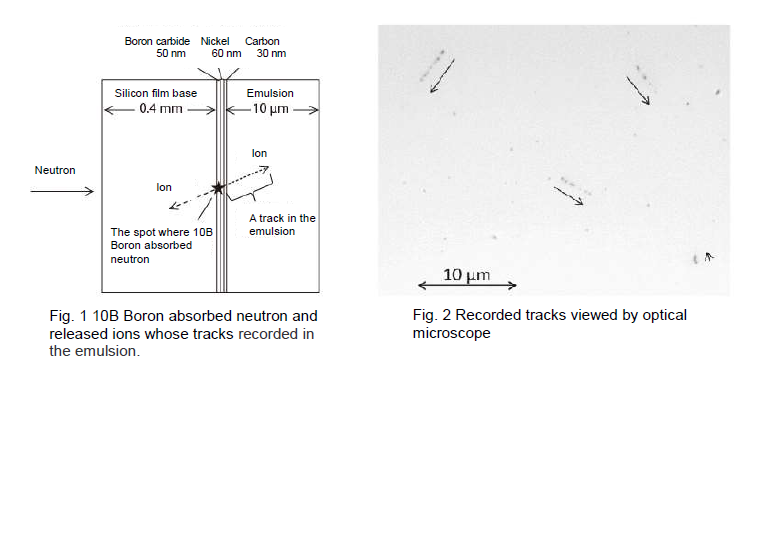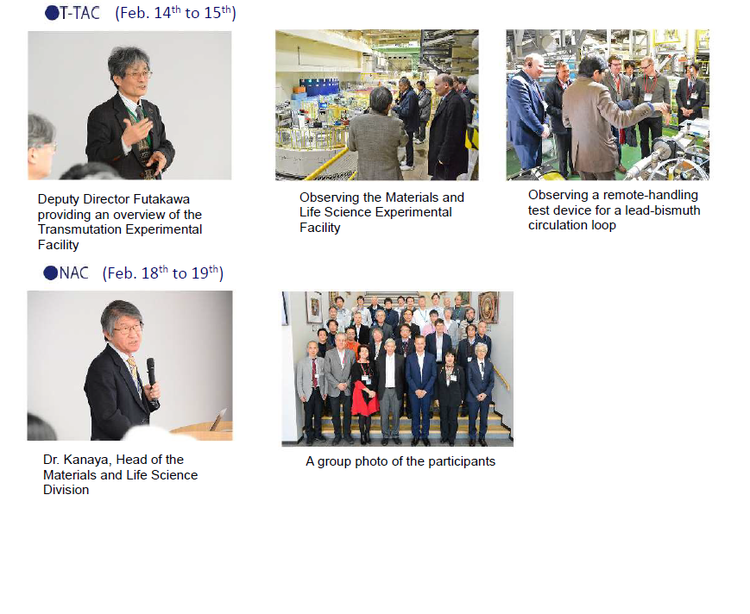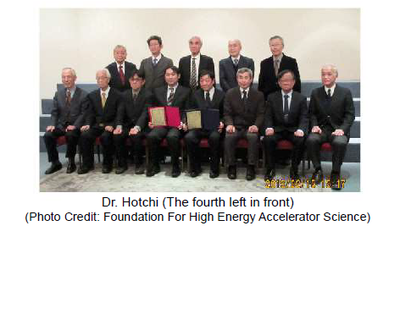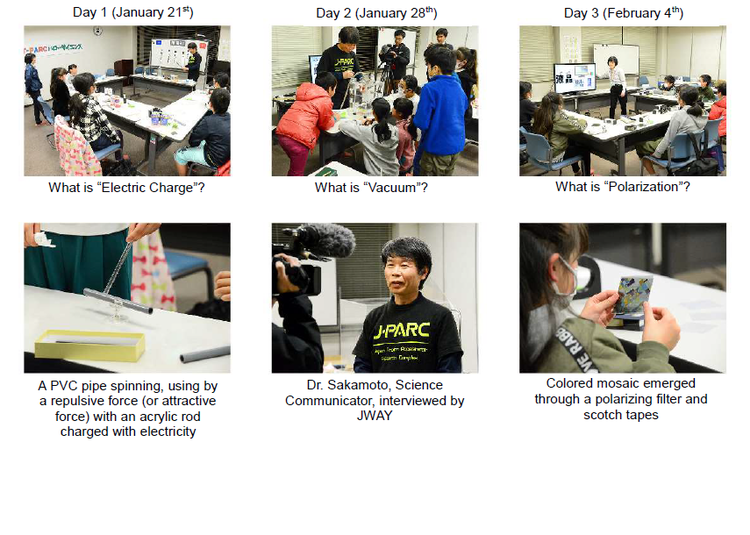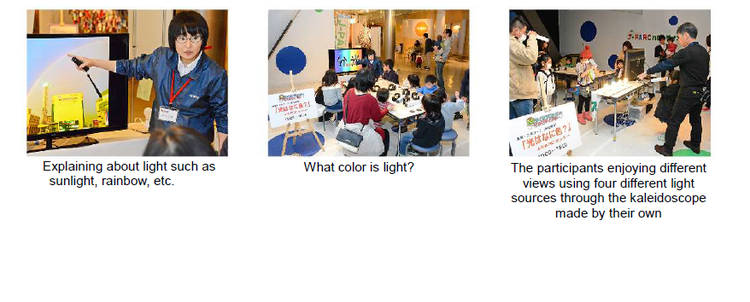J-PARC NEWS February 2019 (Issue #166)
■Successful Development of a New Type of Neutron Detector with Ultra-High Resolution, Employing Technology for Photographing Elementary Particles! --Closing in on the World's Structure by Capturing and Deciphering Neutron Wave Patterns, with Potential for Seeing Through Objects-- (February 15, Press Release)
A research group led by Naotaka Naganawa (Researcher, Nagoya University), Masahiro Hino (Associate Professor, Kyoto University), and Kenji Mishima of J-PARC's Neutron Science Section (Special Associate Professor, KEK) has successfully developed a new neutron detector with an unprecedented maximum resolution of 11 nm, about 2 orders of magnitude greater than the spatial resolution of existing neutron detectors. This detector was realized by introducing a completely new measurement technique employing photographic technology for imaging elementary particle phenomena. The technique is currently used in experiments with neutrinos, muons, and other elementary particles, and for seeing through ancient ruins and remains. A film material for ultra-high-resolution photography of elementary particles, developed at Nagoya University for observation of dark matter particles, was successfully coated with a special thin film containing boron developed at Kyoto University, and the result was stabilized. It was confirmed at the BL05 NOP (Neutron Optics and Fundamental Physics) instrument of the Materials and Life Science Experimental Facility (MLF) that spatial resolution is 100 nm or less. These research results were featured in the November 21, 2018 issue of "The European Physical Journal C" of Online Journal.
(Note) This research was supported by a Grant-in-Aid for Young Scientists (B) (JP26800132).
■Discovery of a New Type of Hypernucleus (Double-Lambda) --Pursuing the Riddle of the Internal Structure of Neutron Stars-- Named the "MINO Event" (February 26, Press Release)
A research team comprising the group of Kazuma Nakazawa (Senior Professor, Gifu University) and contributors from 24 universities and research institutions in six countries has discovered a new type of double-lambda hypernucleus, whose core is a beryllium (Be) nucleus, through an international collaborative experiment (E07) using the Hadron Experimental Facility. This was named the "MINO event." It is the second discovery of a new type of hypernucleus for this group, following on their discovery of the "Nagara Event," and here too, it was confirmed that the force acting between the lambda particles is attractive. The success of this analysis means that, going forward, it will be possible to discover a variety of double-lambda nuclei with different core nuclei by analyzing data gathered in the E07 experiment. This will steadily increase knowledge of the forces acting between lambda particles, based on measurement of their changes in mass, and will help elucidate the internal structure of the neutron stars in remote space. These research results were published on February 22, 2019 in "Progress of Theoretical and Experimental Physics", an international, online, open-access monthly journal published by the Physical Society of Japan.
■Held J-PARC Advisory Committees (February 14 - March 5)
From February 14 to March 5, the J-PARC Center held four advisory committees for the "Transmutation Experimental Facility (TEF), Neutron Experimental Facility (NAC), Accelerator Facility (A-TAC), and Muon Experimental Facility (MAC)", followed by the J-PARC International Advisory Committee (IAC). The purpose of these committees is to have experts from inside and outside Japan discuss and provide advice on J-PARC accelerators, experimental facilities, research content, future plans, and other topics. At TEF, the committee acknowledged the availability of a well documented Technical Design Report on TEF-T written in English, and advised to consider uniqueness and viability of the facility by comparison with similar existing or planned facilities. At NAC, there were lively discussions in response to progress reports by those in charge of the facility, and recommendations were received from the committee at the end. At the IAC held from March 4, the plan called for reports on the current situation by each facility of J-PARC, suggestions by each committee, and discussion of topics such as the best approach for J-PARC going forward.
■Dr. Hideaki Hotchi Receives FY2018 Nishikawa Prize (February 15, Arcadia Ichigaya, Tokyo)
Hideaki Hotchi of the J-PARC Accelerator Division and Senior Researcher at the JAEA has received the FY2018 Nishikawa Prize from the Foundation for High Energy Accelerator Science. This award is bestowed on a researcher or engineer with outstanding originality who has published papers and achieved a high degree of international recognition for research on high-energy accelerators or experimental equipment related to the use of accelerators. This award recognizes the research topic "Beam Mechanical Research and Beam Loss Reduction for the High-Intensity Proton Beam at J-PARC RCS*". It lauds the realization of a high-precision beam simulation at RCS, and achievement of 1 MW acceleration through extreme reduction of beam loss via beam mechanics research using that simulation.
*Rapid Cycling Synchrotron (3 GeV synchrotron)
■Held J-PARC Hello Science at the Tokai Village Children's Science Club (January 21, January 28, February 4, Tokai-mura Nakamaru Community Center)
The Tokai Village Board of Education has established a Children's Science Club* for 5th and 6th grade elementary school students in the village. It has been held three times from January to February 2019, and the J-PARC Center's Science Communicator Dr. Shinichi Sakamoto and others have held science experiment classes as J-PARC Hello Science events. In each class, there is a lecture, project, and experiment on a theme such as static electricity, the vacuum, or light, and on January 28, the event was covered by JWAY cable television from Hitachi City. When interviewed, Dr. Sakamoto spoke passionately: "We want to cultivate children who make projects with their own hands, and deepen their understanding of what will happen through experiments."
*As part of the "Tokai-mura Basic Plan for the promotion of Education: Tokai Education Plan 2020," these events are being held to foster a spirit of inquiry toward science among children.
■J-PARC Hello Science --Investigating the Matter Inside Neutron Stars Based on "Strange" Nuclei-- (January 25, Tokai-mura Industry and Information Plaza "iVil")
Neutron stars are thought to be the densest objects in the universe?, and as one route to understanding the matter they are made of, research is currently underway on hypernuclei containing strange (s) quarks. In the January Science Cafe, Dr. Toshiyuki Takahashi of the Hadron Section presented an introductory overview of hypernuclei research underway at the J-PARC Hadron Experimental Facility. In these experiments, photographic dry plates are used to observe events like the decay of hypernuclei containing two s quarks produced by injecting negatively-charged K mesons (K-, which has an s quark, secondary particles created with an accelerator) into ordinary nuclei*. In response to Dr. Takahashi's detailed presentation on the experiment and its latest results, the participants peppered him with a series of questions, and you could sense the strong interest in research they don't encounter in their ordinary life.
*Nuclei of stable matter are nuclei made up of protons and neutrons composed of up and down quarks.
■J-PARC Hello Science Exhibition at the 26th Hitachi Science Show Festival (February 3, Hitachi Civic Center Science Museum)
On January 27 and February 3, the Hitachi Science Show Festival was successfully held at the Hitachi Civic Center Science Museum, giving visitors a chance to experience science shows, experiments, and projects. The J-PARC Center held a J-PARC Hello Science event with the theme "What Color is Light?" on February 3. Ten classes were held, and children made light kaleidoscopes using diffraction grating sheets. They experienced differences in how things look by observing various light sources such as incandescent, fluorescent, and LED lights using their finished kaleidoscopes. Preschool children also participated, and many kids were seen working hard on their projects with the help of their parents.

